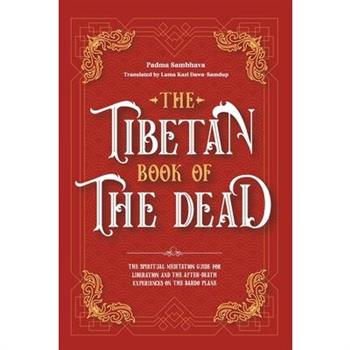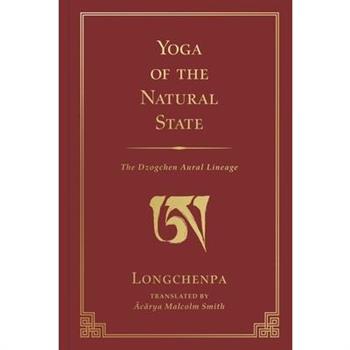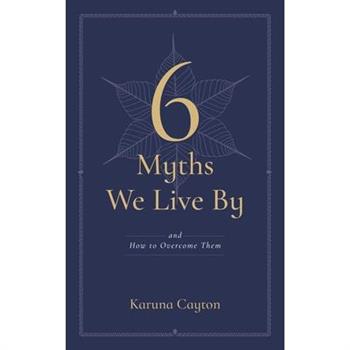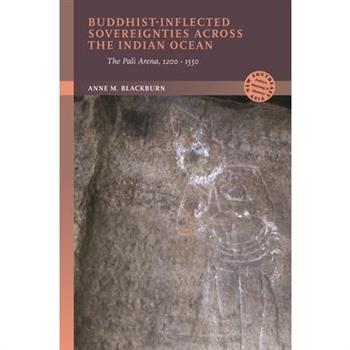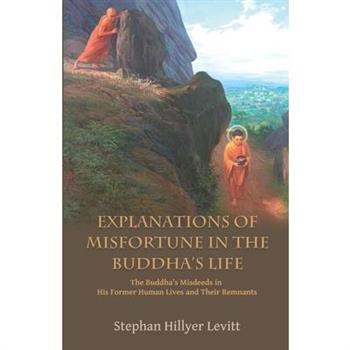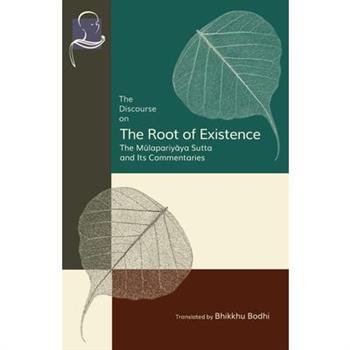Kalyāṇamitra, volume II
Kalyāṇamitra: A Model for Buddhist Spiritual Care presents research and analysis into the professional practice of Buddhist spiritual care based on the work of actual chaplains. Kalyāṇamitra is one of less than a dozen books about this young but growing profession, and the first to present a -comprehensive theory for Buddhist spiritual care.Kalyāṇamitra, Volume I, presents an overview of Buddhist chaplaincy with a comprehensive theoretical framework and model for Buddhist spiritual care. Together, the framework and model outline the stages of formation of a Buddhist chaplain, provide a heuristic for the praxis of spiritual care, and a guide to grounding Buddhist chaplaincy in the Dharma.Kalyāṇamitra, Volume II, focuses on the development of pragmatic skills through-out the education, training and internship of new Buddhist chaplains, as well as an overview of professional issues facing Buddhist chaplains in North America. Volume II builds on the theoretical framework and model presented in Volume I by placing the skills within their context and advancing a plan for the integration of the framework and model in Buddhist chaplaincy pedagogy.
The Roots of Goodness
Learn to nurture the eight qualities of an extraordinary person within yourself through the wisdom of Zen master Dōgen. The Buddha taught that every person is capable of greatness by practicing eight key qualities in their life, from having few desires and not engaging in useless arguments to knowing what is enough. These timeless teachings were later expanded upon by the prolific thirteenth-century Zen master Eihei Dōgen in his final teaching before his death--values that, despite their age, perennially ring true. In The Roots of Goodness, the late Japanese Zen teacher Kōshō Uchiyama R繹shi bridges the gap between the eras of these ancient masters and today, delivering insightful, relatable, and rich commentary that brings these eight qualities into focus and directly applies them to the complexities of modern life. Translator Daitsū Tom Wright, a longtime student of Uchiyama, provides a full translation of Dōgen's original work as well as a faithful translation of Uchiyama's commentary, supplemented with a historical background of Dōgen, an exploration of how the teaching of the eight qualities impacted Uchiyama's life and work, and a personal introduction that grounds the importance of this teaching in modernity. This book seamlessly weaves together ancient wisdom with Uchiyama's beloved humor and style, offering a path for using these qualities to more fully embrace Buddhist practice and answer the age-old question: How does one become a truly good person?
A New Buddhist Movement I
The first of two volumes entitled A New Buddhist Movement, this collection chronicles Sangharakshita's unfolding vision of the Dharma between 1965 and 2009. Underlying all these writings is what Sangharakshita calls 'the essence' of his teaching, the necessity of human spiritual development, and its process through a series of stages drawn from the Buddhist tradition. Part 2 of the volume continues this theme in articles and interviews first published in The Buddhist, the FWBO Newsletter, and other publications, as the movement he founded grew steadily from its first stirrings in a tiny London basement to embrace five continents of the globe. More recent teachings include four previously unpublished talks given between 2007 and 2009.
See the Divine Light
The writer of this publication is born in Copenhagen, Denmark, in 1962. He gives a firsthand personal insight of his conscious direct realization of his nature of mind achieved under meditation "seeing the divine light". He considers himself as a layman yogi practitioner within the Vajrayana Buddhism. It's a testimony published for inspiration.
How Joyous Effort Works
Troy, a young man in his early twenties who has struggled with substance abuse and a quick-fisted temper, seeks to extinguish his habits of the past under the guidance of a Buddhist sage. Continuing his journey with the theme of the previous three books: "When the student is ready the master appears," it's in the thick of a New England summer when Troy meets Jules, a wise teacher and a master luthier (builder of string instruments). Using the luthiers' skills as metaphor and meditative support, Jules guides Troy as he takes on the challenge of integrating the deeper points of the Buddhist view with every aspect of his own life. This includes navigating the death of his uncle, and balancing his spiritual practice with his relationship with Maggie, a young art student who works with him at the local diner. As Troy strives to truly comprehend what it means to develop wisdom, equanimity, and compassion, will he be able to gain mastery over his inner demons when things go dreadfully wrong? This touching story of Troy's journey presents one of the world's most profound teachings on compassion and wisdom. Set in present day New England where the characters' ordinary lives and challenges are recognizable as being similar to our own, we find that it is not necessary to be Buddhist to benefit from the teachings in this story.
Full Circle
Full Circle is a selection of spiritual talks on collective awakening from a Zen perspective. The talks were given by Anne Seisen Saunders, Roshi at Sweetwater Zen Center over a period of five years until 2024.
6 Myths We Live by
Buddhist wisdom for everyday problems rooted in Buddhist philosophy and meditation, 6 Myths We Live By shows us how to uncover our misperceptions and leads us on a path to self-development. The truth is you probably believe all sorts of myths, but you don't even know it. To escape any hardship, any suffering or discomfort, we all believe myths about how the world works and how we live in that world. In 6 Myths We Live By, therapist and long-time Buddhist practitioner Karuna Cayton guides us through six common myths that may give us comfort, but actually only perpetuate our problems: the myth of reality; the myth of identity; the myth of permanence; the myth of randomness; the myth of happiness; the myth of only living once. Cayton takes us through each of these myths using real-world examples and draws upon Buddhist principles, philosophy, psychology, and meditation practices to show how we can wake up to reality. By planting a seed of doubt about the beliefs that we've always thought were true, we can open our eyes and deepen our relationship with the way we see our life, our potential, and the nature of our struggles and achievements.
The Perfection of Wisdom Tradition
The foremost translator of Perfection of Wisdom literature from Tibetan today presents three foundational works that formed the basis for the Tibetans' study of Mahayana scripture and the bodhisattva path. The perfection of wisdom (prajnaparamita) is a key element of the path in Mahayana Buddhism. Wisdom here is the transcendent wisdom of a bodhisattva who has penetrated the nature of reality, the emptiness (shunyata) of all things. Sutras that take the Perfection of Wisdom as their name emerged in the centuries before and after the start of the Common Era and became foundational for the nascent Mahayana. These include the well-known Heart Sutra and Diamond Cutter Sutra as well as the Perfection of Wisdom sutras in eight thousand and a hundred thousand lines. Study of the Perfection of Wisdom sutras in Tibet has historically been through commentaries on the Ornament for the Clear Realizations (Abhisamayalamkara), a short verse distillation in eight chapters attributed to Maitreya that was expanded in India by such figures as Asanga, Haribhadra, and Arya-Vimuktisena. The three works in the present volume reflect the diversity of the Tibetan commentarial tradition on these Indian works. Ngok Loden Sherab's (1057-1109) Topical Summary marks the beginning in Sangphu Monastery of the most influential Perfection of Wisdom commentarial tradition. Ngok's short work leads the reader briskly through the Abhisamayalamkara's seventy topics, presenting what would become the standard framework for explaining the Perfection of Wisdom in Tibet. The entirety of Haribhadra's Vivrti commentary has been embedded in Ngok's text. Gyaltsab Darma Rinchen's (1364-1432) Way to Practice the Sequence of Clear Realizations, structured as a defense of the meditation system set forth by his guru Tsongkhapa in the Great Treatise on the Stages of the Path to Enlightenment, links the stages of the path expanded into the seventy topics with the actual practices of an accomplished yogi. Working outward from the middle of the Abhisamayalamkara's fourth chapter, it explains how the Perfection of Wisdom is integrated into a total and complete meditational practice for the attainment of buddhahood. The great Drukpa Kagyu scholar Kunkhyen Pema Karpo's (1527-92) Sacred Words of Lord Maitreya is the most detailed and systematic of the three works, supplementing explanations of the Perfection of Wisdom based on the Abhisamayalamkara with verses from the Mahayanasutralamkara (Ornament for the Mahayana Sutras) and the Uttaratantra (Sublime Continuum). This work as presented here includes within it a complete translation of the Abhisamayalamkara's eight chapters.
Just Awakening
Just Awakening uncovers a forgotten philosophy of social democracy inspired by Yogācāra, an ancient, nondualistic Buddhist philosophy that claims everything in the perceptible cosmos is mere consciousness and consists of multiple karmically connected yet bounded lifeworlds. This Yogācāra social philosophy emerged in the late nineteenth and early twentieth centuries among Chinese intellectuals who struggled against the violent Social Darwinist logic of the survival of the fittest. Its proponents were convinced that the root cause of crisis in both China and the West was epistemic--an unexamined faith in one common, objective world and a subject-object divide. This dualistic paradigm, in their view, had dire consequences, including moral egoism, competition for material wealth, and racial war. Yogācāra insights about plurality, interdependence, and intersubjectivity, however, had the capacity to awaken the world from these deadly dreams. Jessica X. Zu reconstructs this account of modern Yogācāra philosophy, arguing that it offers new vocabularies with which to reconceptualize equality and freedom. Yogācāra thinking, she shows, diffracts the illusions of individual identity, social categories, and material wealth into aggregated, recurring karmic processes. It then guides the reassembly of a complex society through nonhierarchical, noncoercive, and collaborative actions, sustained by new behavior patterns and modes of thought. Demonstrating why Chinese Buddhist social philosophy offers powerful resources for social justice and liberation today, Just Awakening invites readers to think with modern Yogācāra philosophers about other ways of building egalitarian futures.
Just Awakening
Just Awakening uncovers a forgotten philosophy of social democracy inspired by Yogācāra, an ancient, nondualistic Buddhist philosophy that claims everything in the perceptible cosmos is mere consciousness and consists of multiple karmically connected yet bounded lifeworlds. This Yogācāra social philosophy emerged in the late nineteenth and early twentieth centuries among Chinese intellectuals who struggled against the violent Social Darwinist logic of the survival of the fittest. Its proponents were convinced that the root cause of crisis in both China and the West was epistemic--an unexamined faith in one common, objective world and a subject-object divide. This dualistic paradigm, in their view, had dire consequences, including moral egoism, competition for material wealth, and racial war. Yogācāra insights about plurality, interdependence, and intersubjectivity, however, had the capacity to awaken the world from these deadly dreams. Jessica X. Zu reconstructs this account of modern Yogācāra philosophy, arguing that it offers new vocabularies with which to reconceptualize equality and freedom. Yogācāra thinking, she shows, diffracts the illusions of individual identity, social categories, and material wealth into aggregated, recurring karmic processes. It then guides the reassembly of a complex society through nonhierarchical, noncoercive, and collaborative actions, sustained by new behavior patterns and modes of thought. Demonstrating why Chinese Buddhist social philosophy offers powerful resources for social justice and liberation today, Just Awakening invites readers to think with modern Yogācāra philosophers about other ways of building egalitarian futures.
Forty-Three Guiding Principles for an Enlightened Mind
Inexplicable Joy
A personal exploration of the Heart Sutra by NYT bestselling author and Buddhist teacher Susan Piver"A very helpful practical guide to reading, reciting, and contemplating the Heart Sutra... [that] opens up space for personally exploring this text that is both celebrated and enigmatic." -Karl Brunnh繹lzl, author of The Heart Attack SutraRight now countless humans are reciting the Heart Sutra-no matter when "right now" happens to be. This ancient, essential Buddhist text carries with it a mystery of origin and a myriad of versions for consideration. The longest is 100,000 lines. The one contemplated in Inexplicable Joy is 43 lines. The ultimate is no lines at all. Just one syllable: AH.The Heart Sutra is multi-layered, sacred, and sometimes impenetrable. It also lays out the path to full enlightenment. In Inexplicable Joy, Susan Piver shares her intimate, poignant understanding of this formidable text. She discusses the inner meaning and timeless qualities of the Heart Sutra. Breaking down each of its 43 lines, Piver explains how it is practiced, and offers suggestions for bringing it into our lives-while keeping all of its mysteries intact."In Inexplicable Joy, we are invited into an intimate relationship with The Heart Sutra-one of the most mysterious, deep and powerful spiritual texts in human history. Drawing on her decades-long love relationship with this scripture, Susan Piver points to ultimate truth with a wonderful freshness and vitality." -Tara Brach, best-selling author of Radical Acceptance and Trusting the Gold
Understanding Karma and Rebirth
Understanding Karma and Rebirth A Buddhist Perspective Rebirth and reincarnation have been generally accepted realities in the East since ancient times. There, the question is typically not whether there will be another life, but rather what form it will take. The West, conversely, has its own religious and secular beliefs which usually exclude the possibility of another life - at least not in this world or in this manner. A common Western perspective is that annihilation is inevitable: 'When you're dead, you're dead!'However, whether East or West, until one awakens to the truth, one remains caught in cultural conditioning and personal beliefs. Buddhism focuses on becoming aware of what life actually is, rather than being blinded by beliefs and conditioning.The Buddha saw life as a flowing procession of conditions, events and circumstances, with one thing leading to another without beginning or end - timeless and limitless. He recognised that our aware aspect - that which sees and knows - is never born and never dies. He spoke of directly 'seeing' into the nature of existence, beyond words and intellect.This book explores the underlying message of understanding the cause-and-effect process - the nature of karma and rebirth - and what lies behind it. Diana St Ruth emphasises that Buddhism is a personal journey of discovery involving seeing through one's own delusions. She guides readers progressively towards awareness, mental clarity and understanding.
Buddhist Dream Yoga
An instructional presentation of exercises rooted in the tradition of Dzogchen for enhancing self-awareness and developing clarity within sleep and dream states throughout all moments of the day and night. In Buddhist Dream Yoga, Ch繹gyal Namkhai Norbu gives instructions for developing clarity within the sleep and dream states. He goes beyond the practices of lucid dreaming that have been popularized in the West by presenting methods for guiding dream states that are part of a broader system for enhancing self-awareness called Dzogchen. In this tradition, the development of lucidity in the dream state is understood in the context of generating greater awareness for the ultimate purpose of attaining liberation. Also includes: Specific methods for engaging with dreams and practices to help maintain one's focus throughout both day and night Additional material from a profound and personal Dzogchen book written by Ch繹gyal Namkhai Norbu over many years A text written by Jamgon Mipham, the nineteenth-century master of Dzogchen, which offers additional insights into this extraordinary form of meditation and awareness
Kings of Oxen and Horses
For centuries in China, people beseeched deities to protect the draft animals on which they relied. Across social classes--from peasants plowing the fields to merchants transporting goods through soldiers riding into battle--animals were essential to daily life and so took on a central place in the religious imagination. Prayers and rituals for animal well-being were most frequently addressed to the Horse King, divine protector of horses, donkeys, and mules, or the Ox King, who watched over oxen and buffaloes. Kings of Oxen and Horses is a history of these two gods: their myths, their rituals, and their worshipers. It examines the place of draft animals in Chinese and Buddhist religious traditions and, in so doing, sheds new light on human interaction with nonhuman animals more broadly. Meir Shahar traces the history of the Horse and Ox Kings from late imperial China back to ancient India, revealing the long-term Buddhist influence on Chinese rural religion. He explores the myth of the draft animal as incarnate god, showing how Buddhism transmitted a belief in the sanctity of cattle and a taboo on beef from India to China. Shahar considers the ties between humans and their animal companions through the prism of religious practice, and he draws illuminating comparisons to other world religions. Bridging the gap between animal studies and religious studies, this book is a major contribution to both.
Kings of Oxen and Horses
For centuries in China, people beseeched deities to protect the draft animals on which they relied. Across social classes--from peasants plowing the fields to merchants transporting goods through soldiers riding into battle--animals were essential to daily life and so took on a central place in the religious imagination. Prayers and rituals for animal well-being were most frequently addressed to the Horse King, divine protector of horses, donkeys, and mules, or the Ox King, who watched over oxen and buffaloes. Kings of Oxen and Horses is a history of these two gods: their myths, their rituals, and their worshipers. It examines the place of draft animals in Chinese and Buddhist religious traditions and, in so doing, sheds new light on human interaction with nonhuman animals more broadly. Meir Shahar traces the history of the Horse and Ox Kings from late imperial China back to ancient India, revealing the long-term Buddhist influence on Chinese rural religion. He explores the myth of the draft animal as incarnate god, showing how Buddhism transmitted a belief in the sanctity of cattle and a taboo on beef from India to China. Shahar considers the ties between humans and their animal companions through the prism of religious practice, and he draws illuminating comparisons to other world religions. Bridging the gap between animal studies and religious studies, this book is a major contribution to both.
The Teachings for Victory, vol. 1 (16pt Large Print Format)
Addressing questions such as What constitutes a meaningful life? and What is true happiness?, this guide to Nichiren Buddhism presents the spiritual practice as a teaching of hope that can answer these and other important questions of modern life. Buddhist teacher Daisaku Ikeda offers insights into four of Nichiren's revolutionary letters-each intended to bring out the inherent potential within each individual-and brings the message of the missives to life for a contemporary readership. Readers will not only learn about the exceptional life and times of Nichiren, they will also discover a philosophy of inner transformation that will help them find deep and lasting happiness for themselves and for others. This is the only book that offers commentaries on the writings of the 13th-century teacher Nichiren, one of the most important Japanese Buddhist teachers in the Mahayana tradition.
The Flower of Chinese Buddhism (16pt Large Print Format)
Beginning with the introduction of the religion into China, this chronicle depicts the evolution of Buddhism. The career and achievements of the great Kumarajiva are investigated, exploring the famed philosophical treatises that form the core of East Asian Buddhist literature. Providing a useful and accessible introduction to the influential Tien-t'ai school of Buddhism in Japan as well as the teachings of the 13th-century monk Nichiren, this examination places special emphasis on the faith of the Lotus Sutra and the major works of masters such as Hui-su, Chih-i, and Chanjan. From the early translations of the Buddhist scriptures to the persecution of the T'ang dynasty, this exploration illuminates the role of Buddhism in Chinese society, and by extension, in humanity in general.
Buddhist-Inflected Sovereignties Across the Indian Ocean
Buddhist-Inflected Sovereignties across the Indian Ocean draws attention to the varied, historically contingent, and sometimes competing, arguments for and about sovereignty that operated in the Pali arena during the first half of the second millennium AD. It was a time of expanding interaction within the Indian Ocean just prior to Portuguese colonial presence in Southern Asia. Developing a linked series of case studies and examining territories now subsumed within the nation-states of Sri Lanka, Burma/Myanmar, and Thailand, Blackburn examines sovereign arguments expressed textually, as well as in the built environment, by persons with an interest in the teachings and institutions associated with Gotama Buddha. These cases show that no single model of Buddhist-inflected sovereignty dominated the Pali arena during this time, and that there was no stable vision of "Buddhist kingship." Rather, over time, there was an accrual of possible models and pathways for argumentation about how sovereigns could and should relate to buddha-sāsana. Taking inspiration from diverse sources transmitted through multiple forms and media, arguments for and about sovereignty in the Pali arena were contested and rapidly changing. As the Indian Ocean increasingly shaped the flow of people, objects, and ideas, more peoples and territories participated in the Pali arena, attracted by its intellectual and aesthetic resources. Drawing on extensive scholarship and a wide range of multilingual source materials from premodern Sri Lanka, Burma, Thailand, and Cambodia, Anne M. Blackburn develops innovative conclusions about the relationships between textuality, sovereignty, maritime connectivity, and material culture in each of these areas. The book contributes simultaneously to several fields of study: the intellectual history of Southern Asia, literary and historical scholarship on Buddhism, and historical studies of the Indian Ocean. By offering accessible yet in-depth analysis, Buddhist-Inflected Sovereignties across the Indian Ocean connects research fields and introduces new interpretive possibilities for the study of sovereignty, politics, premodern textual cultures, and Buddhism.
The Path to Freedom
The Vimuttimagga (Volume 1 of two volumes), the "Path to Freedom" is a Theravāda Buddhist manual on the path leading to nibbāna, the ultimate freedom from all mental bondage, that is reached through the practice of virtue, concentration and wisdom. The emphasis of the manual is on concentration or meditation and it contains detailed explanations of all of the traditional Buddhist meditation topics. The manual was composed by the Buddhist monk Upatissa as a guide for those who wish to practise this path. Along with its successor, the larger and more scholastic Visuddhimagga, it is the only known ancient Buddhist manual that is solely dedicated to the cultivation of the path and that gives such detailed, systematic and sometimes unique instructions.The original Pāli text of the Vimuttimagga, probably composed in Sri Lanka in the 3rd or 4th century CE, is lost and the treatise now only survives as a 6th century Chinese translation and partially in Tibetan translations. Besides the first complete English translation of the Chinese text of this important work, as well as a translation of the Tibetan quotations from it, this book also contains an extensive introduction discussing the contents, history and other aspectsof the Vimuttimagga. ________________________Bhikkhu N. Nyanatusita (P.D.H. Prins) is a Buddhist monk ordained in Sri Lanka, where he studied Pali and Theravāda Buddhism. Since 2005 he hasbeen the editor of the Buddhist Publication Society. He has authored a book on the Bhikkhupātimokkha and has also written articles about Pāli texts and manuscripts, Chinese translations of Vinaya texts, and the Prātimokṣasūtra.
The Path to Freedom
The Vimuttimagga (Volume 2), the "Path to Freedom" is a Theravāda Buddhist manual on the path leading to nibbāna, the ultimate freedom from all mental bondage, that is reached through the practice of virtue, concentration and wisdom. The emphasis of the manual is on concentration or meditation and it contains detailed explanations of all of the traditional Buddhist meditation topics. The manual was composed by the Buddhist monk Upatissa as a guide for those who wish to practise this path. Along with its successor, the larger and more scholastic Visuddhimagga, it is the only known ancient Buddhist manual that is solely dedicated to the cultivation of the path and that gives such detailed, systematic and sometimes unique instructions. The original Pāli text of the Vimuttimagga, probably composed in Sri Lanka in the 3rd or 4th century CE, is lost and the treatise now only survives as a 6th century Chinese translation and partially in Tibetan translations. Besides the first complete English translation of the Chinese text of this important work, as well as a translation of the Tibetan quotations from it, this book also contains an extensive introduction discussing the contents, history and other aspectsof the Vimuttimagga. ________________________Bhikkhu N. Nyanatusita (P.D.H. Prins) is a Buddhist monk ordained in Sri Lanka, where he studied Pali and Theravāda Buddhism. Since 2005 he hasbeen the editor of the Buddhist Publication Society. He has authored a book on the Bhikkhupātimokkha and has also written articles about Pāli texts and manuscripts, Chinese translations of Vinaya texts, and the Prātimokṣasūtra.
Filling the Gaps of the Middle-Length Discourses
Pali Canon has been preserved over centuries. Presently, Pali Canon is one of the common sources through which ordinary practitioners who are seeking Buddha Dhamma are trying to understand Dhamma, Nibbana. The Canon in its present format does not contain everything that the Buddha taught and is missing some of the important content. This gap must be filled to open the path for those who are seeking Nibbana. Due to absence of Arahants, important information regarding the practice leading to Nibbana has been absent over the centuries. The way in which an ordinary person interprets a discourse and understand Nibbana is limited. Instead, noble interpretation can provide you in-depth detail about each discourse in line with four-fold Nibbana. The missing content that is hidden underneath each discourse are known only by the noble ones and Arahants. This book provides the missing content in an easy-to-understand way and fills the gap of the Majjhima Nikaya, or Middle Length Discourses of the Buddha, by paving the way for perfection, Arahansthip. In doing so, this book contributes to filling this gap that has existed through the centuries, clarifying the missing content, pointing out misinterpretations, and attempting to remove the misunderstanding of Nibbana by linking existing sources to higher Dhamma in a way that facilitates readers who are familiar with conventional Dhamma to climb up the ladder to reach Sotapanna and above through developing their vision of Dhamma; Nibbana.
Explanations of Misfortune in the Buddha’s Life
The Buddha explained that all deeds have their consequences, even for him and even in his life as the Buddha. This book delves into the profound and multifaceted ways in which misfortune is addressed within the life and teachings of the Buddha. Author Stephan Hillyer Levitt explores how the Buddha, throughout his journey, encountered and navigated various forms of suffering, from personal loss and illness to challenges within the saṅgha. Drawing upon primary sources and scholarly interpretations, Levitt examines how the Buddha's own experiences with misfortune shaped his understanding of suffering, its causes, and the path to liberation. He investigates how these experiences are reflected in the Buddha's teachings, moreover, how the events flow naturally from the vantage of everyday causality as well as from the results of kamma. Explanations of Misfortune in the Buddha's Life offers a unique and insightful perspective on the Buddha's life and teachings, revealing the profound impact of suffering on his own spiritual journey and the profound wisdom he imparted to others.
Tantric Buddhism
The state of Odisha, in eastern India, is home to a unique concentration of images of deities and symbols dating from the earlier days of Tantric Buddhism up to the later developments of Vajrayana. Could Odisha be Oddiyana, the mythical kingdom from which Vajrayana is said to originate? This essay on one aspect of the history of Tantric Buddhism in South Asia tries to answer this question within the larger frame of the development of Buddhism in India. Going against some received ideas, it also exposes the role played by Buddhism in the birth of Hinduism. It concludes with an examination of the Buddhist heritage in contemporary Indian religious movements. This volume contains excerpts from The Accomplishment of Wisdom, by King Indrabodhi, as well as the integrality of the Accomplishment of Non-Duality, by Princess Lakshminkara, both translated exclusively from the original Sanskrit texts for the first time.
Arya Tara Concise Ganachakra Offering
This Arya Tara Concise Ganachakra Offeringī is arranged in Tibetan, phonetics, and English translation by Khenpo Migmar Tseten from original sources. It is our hope that these pages offer a window into the awakened state and inspire you in your own practice. May all sentient beings everywhere experience peace. Important requirement: It is very important to receive the empowerment, transmission, and instruction from the Master who holds the Tārā lineage to do the practices.
Clearing the Way to Awakening
ARE YOU FASCINATED by stories of permanent shifts in personal consciousness called "awakening" or "enlightenment"? Written by a trusted American teacher of Tibetan Buddhism, Clearing the Way to Awakening will introduce you to the spirited nine-step practice that nearly every acclaimed enlightened being from Tibet completed. Known as the ngondro, it radically re-orients the practitioner to an inspiring long-term vision, frees them from unconscious limiting karmic patterns, and fills them with positive karmic force that cannot be stopped. This book addresses: Why each step of the practice is crucially important.What each of the nine trainings in it are, and how to work with your skepticism. How you can find excellent spiritual mentors and avoid the bad ones.How to get a taste of each training step of the ngondro process to see if it is for you.How you would do each step of the ngondro practice, and successfully bring this rigorous training program into your daily life.Whether you are an explorer in human consciousness, or have newly launched into the practice, this book is for you.YUDRON WANGMO has completed decades of in-depth practice, and was honored with the bestowal of a traditional teaching title-Loppon-and charged with the responsibility to communicate these practices as a living tradition.
Regarding Views and Regime Changes
Ancient misinterpretation of Buddhist philosophy versus ancient correct interpretation of Buddhist philosophy led to total war, spanning worlds, hells, and heavens, according to this legendary tale of the cataclysmic rise and fall of a militant. The "right interpretation and the wrong interpretation" expressions of the "Matam Rutra" chapter of Shakti and Shakta (1918) forms the main basis of this work. The annotated translation by Sir John Woodroffe and Kazi Dawa-samdup of that portion of Khandro Yeshe Tsogyal's writing receives light, additional editing here. Additionally, as annotations, a strategic sequence of quotations occurs after the tale, as commentary. Supplemental contributors include Anonymous/Unknown, Lao-Tzu, James Legge, F. Max Muller, and Synapsid Revelations Press. At a holistic level, this literary work serves as a mixture, however much to consider it to consist of direct statements, metaphors, and/or parables; including insight into the concealed essence of regime changes.
The Discourse on the Root of Existence
The Mulapariyāya Sutta, is considered one of the most important texts in the Pāli Canon. The Buddha taught it to clear away the mental obstructions preventing a correct grasp of his teaching and to open the way for insight to arise. It aims at eliminating the whole range of subjective misconceptions centered on the concept of an ego right down to their roots. It reveals the structure of man's ego-biased orientation towards the world, shows the way this mental stratification colors and distorts his understanding, and points out the work of inner re-orientation he must do to free himself from his egoistic bonds. The present work offers an English translation of the discourse together with its commentarial exegesis, essential for understanding the many difficult passages occurring in the primary text. The presentation gives the sutta first, then follows it with an exegetical section containing the commentary and selected passages from the subcommentary. The introduction provides a detailed guide to the meaning of the sutta and explores its implications for epistemology, ontology, and psychology. It discusses important topics dealt with in the discourse such as the structure of ego- consciousness. 2024 Pariyatti Press Edition
The Discourse on the All-Embracing Net of Views
The Brahmajāla Sutta, one of the Buddha's most important and profound discourses, weaves a net of sixty-two cases capturing all the philosophical, speculative views on the self and the world. Its assignment as the first discourse in the Collection of Long Discourses reflects the high esteem in which it was held by the ancient compilers of the Pāli Canon. But the Brahmajāla is more than merely the first item in a collection of discourses, it is the gateway to the entire Teaching of the Buddha itself. Its central message must be grasped to ensure a correct understanding of the Teaching. This book contains an accurate and readable translation of this discourse, as well as of its massive commentary and the subcommentary, allowing for a close in-depth study of the work. The book also contains translations of three commentarial treatises that throw valuable sidelights on rarely known aspects of Theravada Buddhism: "The Treatise on the Pāramīs", a lengthy treatise on the Theravada conception of the Bodhisatta ideal, "The Meaning of the Word Tathāgata," and "The Method of the Exegetical Treatises" The introduction by Bhikkhu Bodhi is itself a modern philosophical commentary on the sutta. It elucidates the key points of the discourse and explains the place of the Brahmajāla in the overall structure of Buddhist thought. 2024 Pariyatti Press Edition




